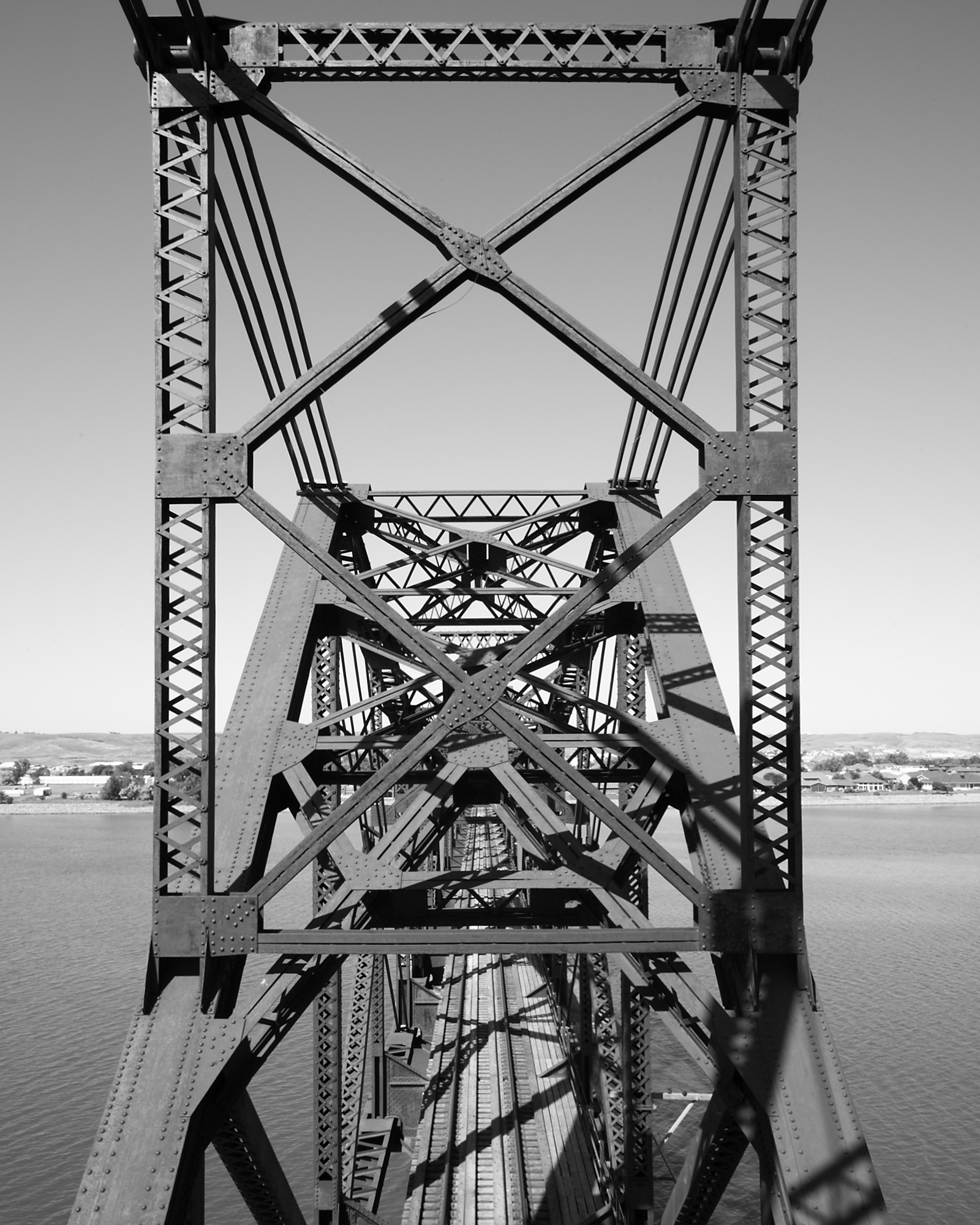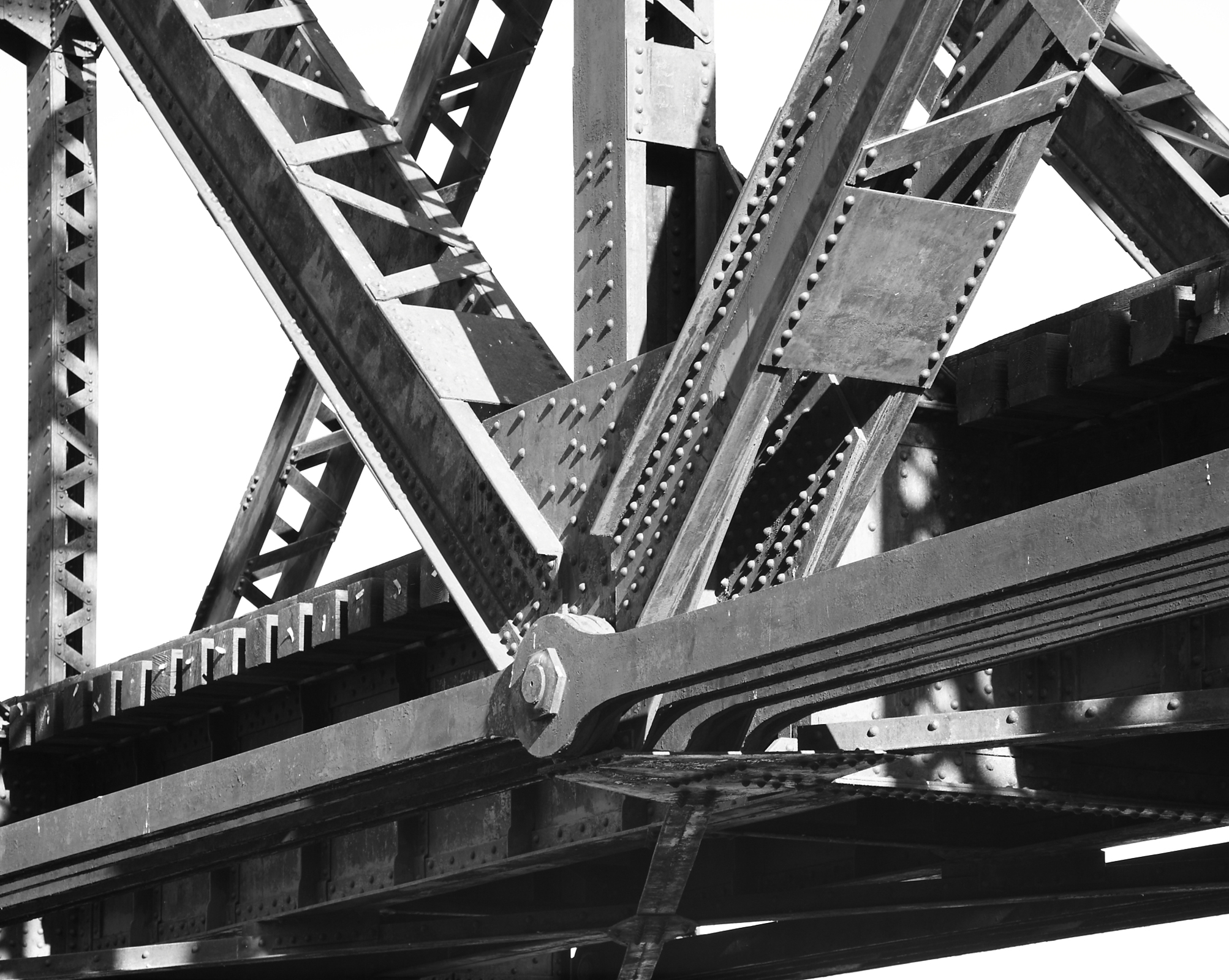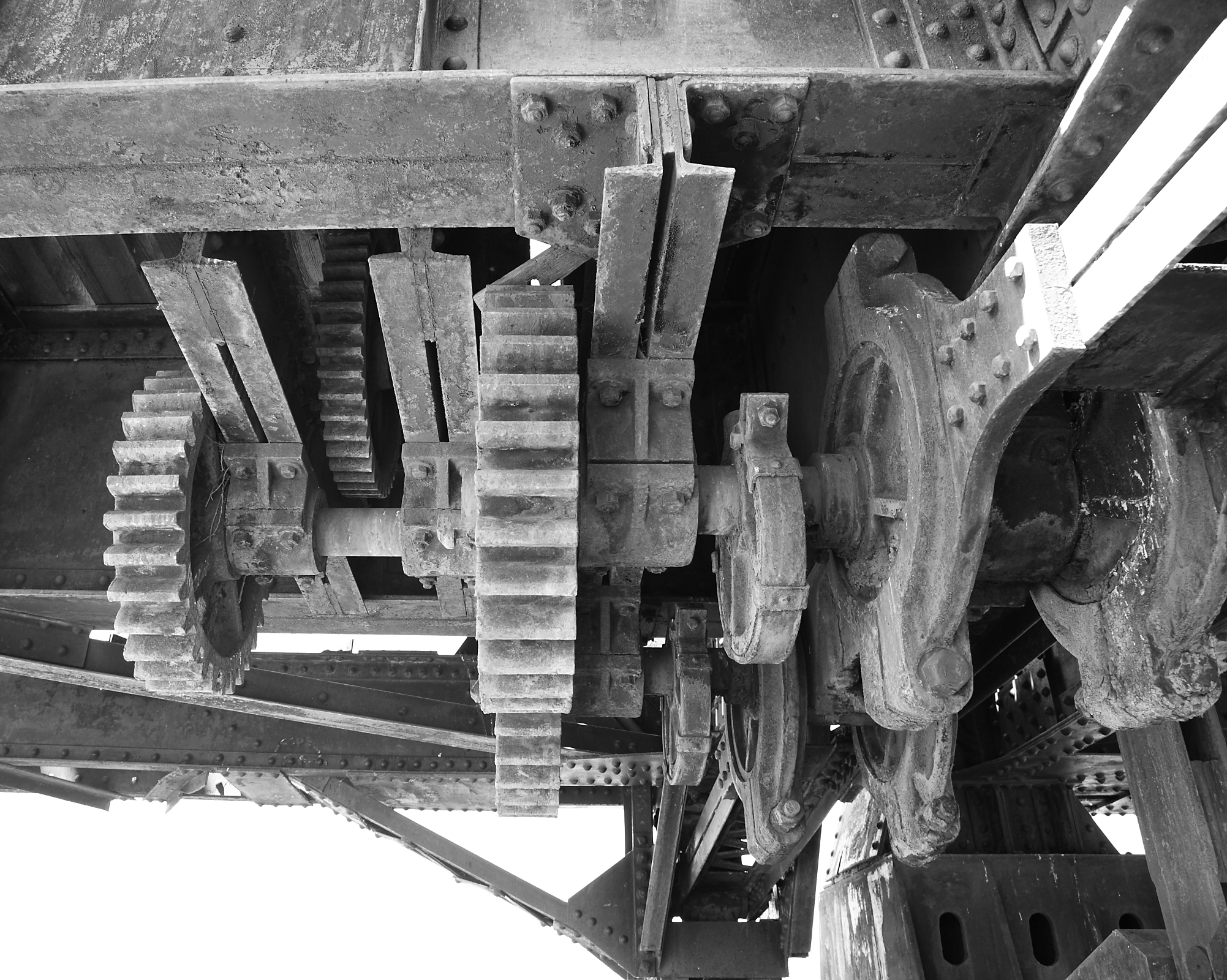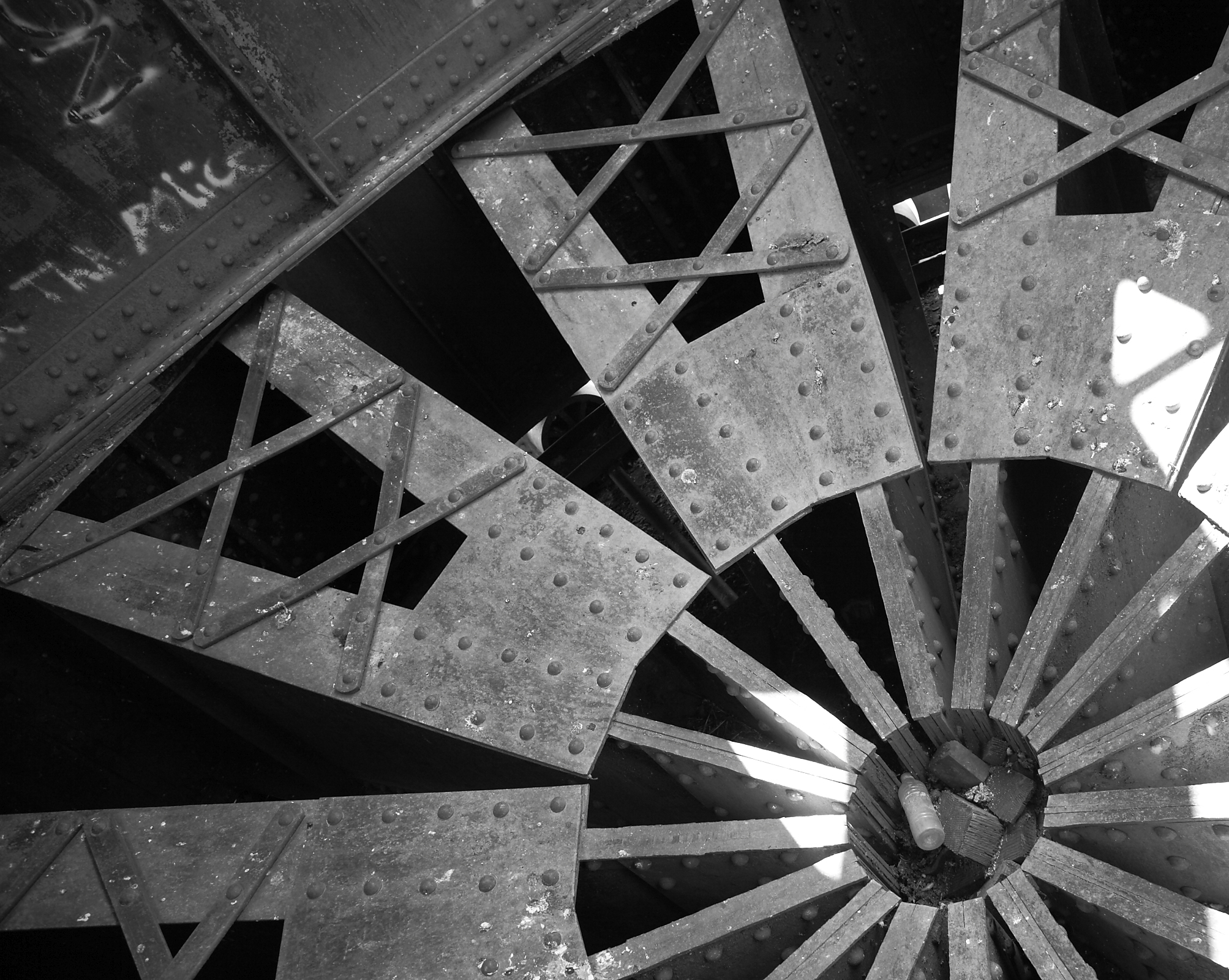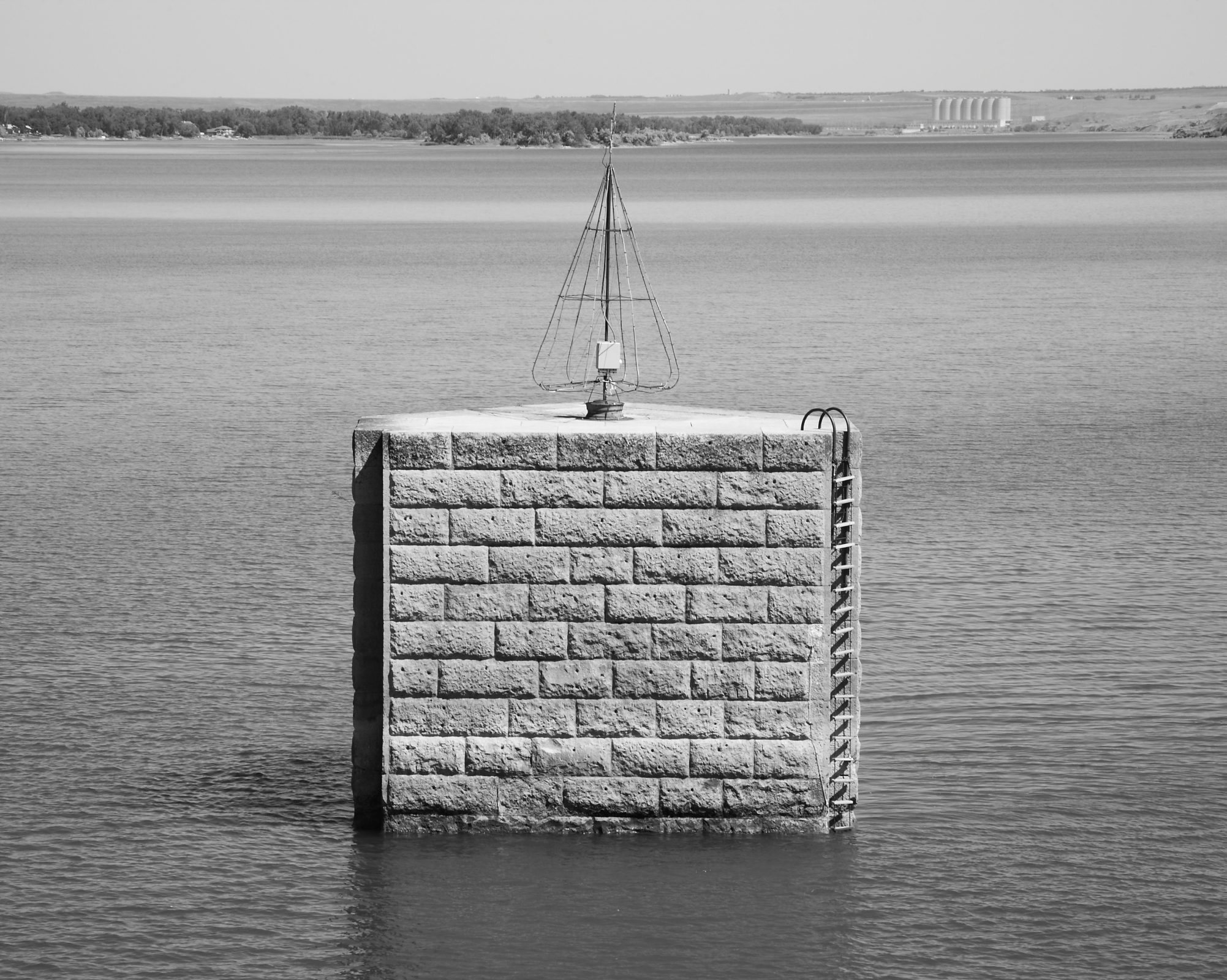Chicago & North Western Railroad Bridge (1907) Pierre, South Dakota

The Chicago & North Western Railroad (C&NW) Swing Bridge spans the Missouri River north of the city of Pierre, South Dakota and features four 352-foot Pennsylvania through truss spans and one modified 445-foot Pennsylvania through truss swing span. The lower truss chords are pin-connected, with riveted truss diagonals and subtrusses. Including multi-span approaches on the east and west, the crossing is approximately 2,200 feet long and 20 feet wide. Massive concrete piers support the superstructure and are jacketed with ashlar granite.
The crossing was designed by E. C. Carter and W. H. Finley, chief engineer and assistant chief engineer respectively of the C&NW Railroad. F. H. Bainbridge served as engineer and C. C. Witt as assistant engineer in charge from 1905 to the crossing’s opening in October 1907. H. M. Betts Co. performed the grading of the approaches, with Arthur McMullen & Co. (Evanston, IL) supervising the construction of the substructure and W. W. McDonald & Co. providing steel for the ciassons and piers. The Pennsylvania Steel Company (Steelton, PA) fabricated the superstructure steel and subcontracted the L. M. Bernhisel Construction Co. (Chicago, IL) to supervise the on-site assembly. (E. C. Carter and F. H. Bainbridge worked with the Pennsylvania Steel Co. on other major C&NW river crossings near Boone, Iowa [1900-1901] and over the Mississippi River in Clinton, Iowa [1908-9].)
The Chicago & North Western Railroad Swing Bridge was listed in the National Register of Historic Places (NRHP) in 1998 under Criterion A for its association with the development and expansion of the Chicago & North Western Railway in South Dakota, and under Criterion C as a well-preserved example of early twentieth-century moveable railroad bridge. According to the NRHP nomination form, this is South Dakota’s only known remaining swing bridge and is “probably among the largest such structures to survive nationally.”
ARCH3, LLC performed Level I photographic documentation for the Historic American Engineering Record (HAER) prior to the proposed use of the bridge to carry coal trains from Wyoming’s Powder River Coal Basin.
Additional information about the construction of the bridge can be found at the South Dakota State Historical Society.


